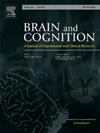Neural impact of anti-G suits on pilots: Analyzing microstates and functional connectivity
IF 1.4
3区 心理学
Q3 NEUROSCIENCES
引用次数: 0
Abstract
Overload represents a significant challenge for pilots in flight, with a substantial impact on flight safety. Currently, the primary method of protection is the utilization of inflatable anti-G suit to address instances where blood is concentrated in the lower extremities. The inflatable air pressure of the anti-G suit varies in response to different overload conditions, which in turn affects the pilot’s sensory and brain loads. However, this change has not yet been fully explored. To investigate the neural effects of pressure from the anti-G suit under different degrees of overload, this paper employs a pressurized simulation methodology. The subjects’ brain state changes during the simulation are measured through electroencephalogram (EEG), and comparative calculations are performed using microstate and functional connectivity. The final results demonstrate that varying inflation levels of the bladder anti-G suit can influence the microstate and functional connectivity. The Duration, Coverage, Occurrence, and transition probability (TP) characteristics of microstate C demonstrated significant variance across three distinct levels of overload. The mean increase in Phase Locking Value (PLV) for overload 3 relative to the absence of overload was 13.8%, and the number of channel synchronizations underwent a transition from 7 to 62.
抗g服对飞行员的神经影响:分析微观状态和功能连接
过载是飞行员面临的一个重大挑战,对飞行安全有重大影响。目前,主要的保护方法是利用充气抗g服来解决血液集中在下肢的情况。反g服的充气气压会根据不同的过载条件而变化,从而影响飞行员的感官和大脑负荷。然而,这种变化尚未得到充分探索。为了研究不同过载程度下抗g服压力的神经效应,本文采用了加压仿真方法。通过脑电图(EEG)测量受试者在模拟过程中的脑状态变化,并使用微状态和功能连接进行对比计算。最终结果表明,不同充气水平的膀胱抗g服可以影响微观状态和功能连接。微状态C的持续时间、覆盖率、发生率和转移概率(TP)特征在三个不同的过载水平上显示出显著的差异。相对于无过载时,过载3的锁相值(PLV)平均增加13.8%,通道同步次数从7次过渡到62次。
本文章由计算机程序翻译,如有差异,请以英文原文为准。
求助全文
约1分钟内获得全文
求助全文
来源期刊

Brain and Cognition
医学-神经科学
CiteScore
4.60
自引率
0.00%
发文量
46
审稿时长
6 months
期刊介绍:
Brain and Cognition is a forum for the integration of the neurosciences and cognitive sciences. B&C publishes peer-reviewed research articles, theoretical papers, case histories that address important theoretical issues, and historical articles into the interaction between cognitive function and brain processes. The focus is on rigorous studies of an empirical or theoretical nature and which make an original contribution to our knowledge about the involvement of the nervous system in cognition. Coverage includes, but is not limited to memory, learning, emotion, perception, movement, music or praxis in relationship to brain structure or function. Published articles will typically address issues relating some aspect of cognitive function to its neurological substrates with clear theoretical import, formulating new hypotheses or refuting previously established hypotheses. Clinical papers are welcome if they raise issues of theoretical importance or concern and shed light on the interaction between brain function and cognitive function. We welcome review articles that clearly contribute a new perspective or integration, beyond summarizing the literature in the field; authors of review articles should make explicit where the contribution lies. We also welcome proposals for special issues on aspects of the relation between cognition and the structure and function of the nervous system. Such proposals can be made directly to the Editor-in-Chief from individuals interested in being guest editors for such collections.
 求助内容:
求助内容: 应助结果提醒方式:
应助结果提醒方式:


